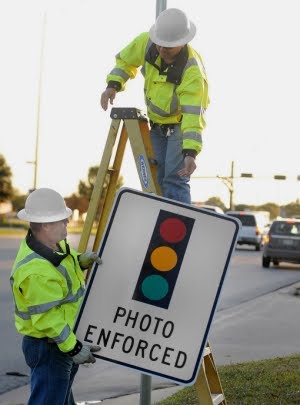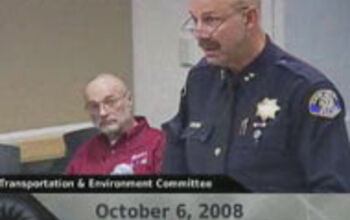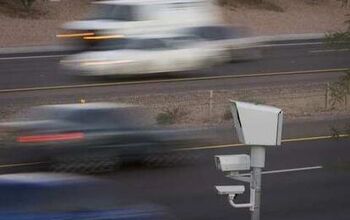Two More California Cities Reject Red Light Cameras
Red light cameras are nowhere near as popular as they once were with Golden State municipalities. Loma Linda and Whittier became the most recent examples of California cities unplugging their automated ticketing machines after noting that the devices both failed to reduce accidents and generate the promised amounts of revenue.
In 2005, Loma Linda allowed Redflex Traffic Systems to mail tickets, now nearly $500 each, to motorists who primarily made slow, rolling right-hand turns on red. In the second year of the program, the city lengthened the duration of the yellow light at the enforced intersection. As a result, straight-through violations — and profit — plunged. This convinced council members that the program was not worth keeping, but Redflex prevented the city from canceling the contract by threatening to the city to pay for three years’ worth of “losses” accumulated since the signal timing change. The Australian company then took steps to conceal the long-term effect of longer yellow on straight-through citations.
“Redflex held the deficit over our heads since the contract stated that they would forgive the deficit only at the end of the term,” Mayor Rhodes Rigsby told TheNewspaper. “Redflex apparently stopped separating the statistics for straights, lefts and rights to prevent me from further reporting of their perfidious business model.”
Extended yellow timing does not change the number of tickets for the right-hand turns that made up 95 percent of tickets by program’s end. The Loma Linda council’s most vocal camera critic hopes the city’s experience will encourage other cities to drop their photo enforcement programs.
“These cameras need to be taken down everywhere,” Councilman Ovi Popescu told TheNewspaper. “They are used to enrich governments and pay for out of control spending on pensions and salaries here in California. I feel sorry for the residents of many other communities such as Los Angeles and San Bernardino who will suffer at the hands of a government that is only getting bigger and more determined to take your money all under the guise of improving safety.”
Residents in Whittier will no longer see cameras flashing after officials admitted the cameras neither reduced accidents nor generated revenue. The city last month allowed its contract to expire, forcing American Traffic Solutions to remove its equipment.
Throughout the state, the same complaints have been heard throughout the year. In January, Moreno Valley dropped cameras. San Carlos canceled in April. Union City dumped cameras in June. Yucaipa and Costa Mesa ended automated ticketing in July. In November, 73 percent of Anaheim residents voted to ban cameras, although they had not been installed.
In the past, Cupertino, Compton, El Monte, Fairfield, Fresno, Irvine, Maywood, Paramount, Redlands, Roseville, San Jose (photo radar), Santa Rosa, and Upland have rejected their automated ticketing programs.
[Courtesy: Thenewspaper.com]
More by The Newspaper
Latest Car Reviews
Read moreLatest Product Reviews
Read moreRecent Comments
- MaintenanceCosts Poorly packaged, oddly proportioned small CUV with an unrefined hybrid powertrain and a luxury-market price? Who wouldn't want it?
- MaintenanceCosts Who knows whether it rides or handles acceptably or whether it chews up a set of tires in 5000 miles, but we definitely know it has a "mature stance."Sounds like JUST the kind of previous owner you'd want…
- 28-Cars-Later Nissan will be very fortunate to not be in the Japanese equivalent of Chapter 11 reorganization over the next 36 months, "getting rolling" is a luxury (also, I see what you did there).
- MaintenanceCosts RAM! RAM! RAM! ...... the child in the crosswalk that you can't see over the hood of this factory-lifted beast.
- 3-On-The-Tree Yes all the Older Land Cruiser’s and samurai’s have gone up here as well. I’ve taken both vehicle ps on some pretty rough roads exploring old mine shafts etc. I bought mine right before I deployed back in 08 and got it for $4000 and also bought another that is non running for parts, got a complete engine, drive train. The mice love it unfortunately.


































Comments
Join the conversation
This still begs the question (that's right, pedants, I'm using that phrase in the accepted colloquial sense instead of the traditional purist sense!): If it hadn't reduced accidents, but HAD increased revenue, would they still be taking them down? Rolling right turns are crap. It's illegal, but I still think right-on-red should be changed to be considered more like a Yield at intersections with good visibility.
It would be interesting to have a town propose to ATS that they will allow red light cameras to be installed but only if the algorithm is altered to pay every scanned plate with a 5 cent reward for each car that does NOT violate that intersection per visit (lump sum to be payed annually to each registered car). If ATS really believes in a safety enhancing system using financial sticks and carrots, then they ought to get on board and not be afraid that a highly compliant town of motorists would cost them dearly in payouts.